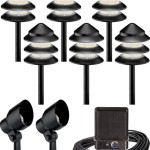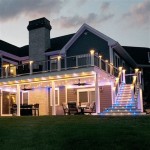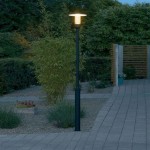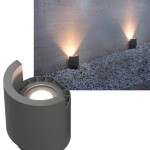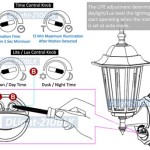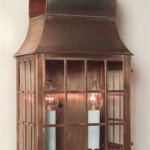How An Outdoor Wood Burning Stove Works
An outdoor wood burning stove offers a versatile heating and cooking solution for patios, camping areas, and off-grid living situations. Understanding the mechanics of these stoves allows for efficient and safe operation, maximizing their benefits for warmth, cooking, and overall outdoor comfort. This article explores the components, function, and optimal practices for using outdoor wood burning stoves.
An outdoor wood burning stove is fundamentally a contained combustion unit designed to burn wood for heat generation. The heat is then radiated outwards, provides a surface for cooking, or can be directed into a water heating system depending on the specific model. Unlike open campfires, these stoves offer increased control over the burning process, greater fuel efficiency, and reduce the risk of uncontrolled fires. The core operation involves a carefully managed balance of fuel, oxygen, and heat to sustain efficient combustion.
These stoves come in various designs and sizes, ranging from portable units suitable for camping to larger, semi-permanent installations for decks and patios. Common materials include cast iron, steel, and stainless steel, chosen for their durability and heat resistance. Many models also incorporate features like adjustable air vents, spark arrestors, and chimney systems to optimize performance and safety.
Core Components and Their Functions
The functionality of an outdoor wood burning stove relies on several key components working in concert. Each part plays a crucial role in the combustion process, heat transfer, and control of the fire. A solid understanding of these components is essential for efficient and safe operation.
First, the firebox is the heart of the stove where the wood is directly burned. Typically constructed from heavy-duty steel or cast iron, the firebox must withstand high temperatures and repeated use. Its design often incorporates features that promote airflow and even burning of the wood, like a grate at the bottom. The size of the firebox dictates the capacity of the stove and the size of wood that can be efficiently burned.
Second, air intake vents provide controlled access for oxygen to fuel the combustion process. These vents are usually adjustable, allowing the user to modulate the intensity of the fire. Opening the vents increases airflow, resulting in a hotter and faster-burning fire. Conversely, closing the vents restricts airflow, slowing the burning process and conserving fuel. The location and design of the vents are carefully engineered to promote efficient and complete combustion.
Third, the chimney or flue system is essential for venting the smoke and exhaust gases away from the stove and the surrounding area. The chimney's height and diameter are critical for creating adequate draft, which pulls air through the firebox and facilitates proper combustion. A well-designed chimney prevents backdrafting and ensures that smoke is safely expelled upwards. Many chimneys also incorporate spark arrestors, which are screens designed to prevent embers from escaping and potentially starting fires.
Fourth, many outdoor wood burning stoves also utilize a damper, a movable plate within the chimney that allows further refinement of airflow. By partially closing the damper, the rate at which exhaust gases escape is reduced, which can help to retain more heat within the stove. However, it is crucial to never completely close the damper while a fire is burning as this can lead to a dangerous buildup of carbon monoxide.
Fifth, the stove body itself contributes significantly to heat radiation. The material and design of the stove body determine how efficiently heat is transferred to the surrounding environment. Cast iron stoves, for example, are known for their excellent heat retention and radiant heat output. The stove body may also incorporate features like cooking surfaces or warming shelves, adding to its versatility.
The Combustion Process Explained
The combustion process in an outdoor wood burning stove is a chemical reaction that requires three essential elements: fuel (wood), oxygen, and heat. When these elements are combined in the correct proportions and at the appropriate temperature, combustion occurs, releasing heat and light. The efficiency and cleanliness of the combustion process depend on factors such as the type of wood, the moisture content of the wood, and the amount of air supplied to the fire.
The process begins with the ignition of the wood. Initially, the wood is heated, causing it to release volatile gases. These gases, which include hydrocarbons and other flammable compounds, are what actually burn in the presence of oxygen. The temperature at which these gases ignite is called the ignition temperature. Kindling, which is small, dry pieces of wood, helps to quickly reach this ignition temperature and establish a stable fire.
Once the fire is established, the combustion process becomes self-sustaining. The heat generated by the burning gases radiates back onto the wood, causing more gases to be released. This creates a continuous cycle of gasification and combustion. The rate at which the wood burns is determined by the amount of oxygen available and the temperature of the fire.
Proper airflow is crucial for complete combustion. If there is insufficient oxygen, the combustion will be incomplete, resulting in the production of smoke, soot, and carbon monoxide. These byproducts represent wasted fuel and can be harmful to the environment and human health. Supplying adequate air allows for more complete combustion, reducing emissions and maximizing heat output.
The type of wood used also affects the combustion process. Hardwoods, such as oak and maple, are denser and contain more energy per unit volume than softwoods, such as pine and fir. This means that hardwoods will burn longer and produce more heat. However, softwoods tend to ignite more easily, making them useful for starting fires. The moisture content of the wood is also critical. Wet wood requires more energy to burn because the water must be evaporated before the wood can ignite. Burning wet wood results in lower heat output and increased smoke production.
Optimizing Efficiency and Safety
Achieving optimal efficiency and safety when using an outdoor wood burning stove requires careful consideration of several factors, including fuel selection, stove placement, proper operation techniques, and regular maintenance. By following best practices, users can maximize the benefits of their stove while minimizing the risks associated with open-flame combustion.
Selecting the right fuel is paramount. Seasoned hardwoods are the ideal choice for sustained burning and high heat output. Seasoning involves allowing the wood to dry for at least six months to a year, reducing its moisture content to below 20%. This ensures efficient combustion and minimizes smoke production. Avoid burning green wood, which is high in moisture, as well as treated wood, which can release harmful chemicals when burned.
Proper stove placement is essential for both safety and performance. The stove should be located on a level, non-combustible surface, such as concrete or stone, and should be positioned away from flammable materials like dry grass, leaves, and overhanging branches. Adequate clearance should be maintained around the stove to prevent accidental contact and reduce the risk of fire spread. Consult the manufacturer's instructions for specific clearance recommendations.
Safe operation involves careful monitoring of the fire and proper use of the stove's controls. Never leave a burning stove unattended, especially when children or pets are present. Use a fire poker or tongs to safely adjust the wood and maintain the fire. Avoid overloading the firebox, as this can lead to excessive heat and potentially damage the stove. Always open the air vents fully when starting a fire and gradually adjust them as needed to maintain the desired burn rate.
Regular maintenance is crucial for ensuring the longevity and safe operation of the stove. The chimney should be inspected and cleaned annually to remove creosote buildup, which is a flammable residue that can accumulate in the chimney and cause a chimney fire. Inspect the stove for cracks or damage and repair them promptly. Clean the firebox regularly to remove ash and debris, which can impede airflow. Store firewood in a dry, well-ventilated area to prevent it from becoming damp or infested with pests.
Implementing these best practices will enhance the efficiency, safety, and overall enjoyment of an outdoor wood burning stove. By understanding the principles of combustion, the function of the stove's components, and the importance of proper operation and maintenance, users can confidently utilize these stoves for heating, cooking, and creating a comfortable outdoor environment.

How An Outdoor Boiler Works Ez Boilers

Outdoor Wood Burning Furnace Boilers From Madison Wi To E Iowa

Air Outdoor Wood Boilers Wisconsin Department Of Health Services

Outdoor Wood Coal Boiler Installation

Outdoor Wood Boiler Vs Furnace

How Heat From A Central Boiler Outdoor Furnace Gets To Your Home Wood Furnaces Of Ohio Llc

Wood Boiler Basics Obadiah S Boilers

Best Outdoor Wood Furnace Central Boiler

Outdoor Wood Boiler This Is How We Heat Our Home And Water Why I Am Looking Into Make Lye From A Furnace Burner

Outdoor Wood Boiler

